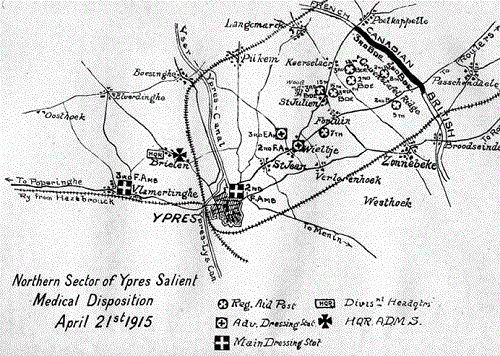
Sky
& Bullets
Musings on the worlds of aviation, military and international affairs.
With reviews of books that cover these topics
Contact
Fred's War
A Doctor in the Trenches
Andrew Davidson, Short Books, published 7th November 2013
As we prepare for a deluge of tomes to mark the 100th anniversary of the outbreak of the “war to end all wars”, it is very welcome to start with a book that is so personal. Fred’s War is, as the title implies, a very intimate perspective. Andrew Davidson is the grandson of Fred, and shares with the reader that peculiar joy when one unwraps new layers of information about an ancient relative, one that in this case, he was too young ever to meet.
Fred was a “son of the Manse” from North East Scotland, and rather more noble, it would appear, than the counterpart who presided over the UK recently. The influence to start a medical career came from his mother’s family, and Fred was drawn to a career in the Royal Army Medical Corps even before WW1 started. The author paints a particularly bleak picture (possibly unduly so) of the career choices facing a civilian doctor in those pre-NHS days.
Davidson (Andrew) moves swiftly into the action. I was very amused by Kitchener’s exhortation to his troops:
“In this new experience you may find temptation both in wine and women. You must entirely resist both temptations, and, while treating all women with prefect courtesy, you should avoid any intimacy”.
Something that Kitchener managed to sustain throughout his life, I believe!
The book’s rhythmical prose draws in the reader, but it is the photographs which are the main attraction, for Fred was an enthusiastic early adopter of photography, and with relatives in the right places (in the Army) felt comfortable in flaunting the Army’s prohibition of snapping at the front. Fred is with, but not of (as all medics find), the 1st Cameronians.
Once the toughening-up route marches have taken place, the book colours the chaos of retreat, the loss of equipment and arms, the constant changing of orders. All the while through a battlescape that has yet to lose much of its normality. There are cabbages to be seen in the fields, leaves on the trees, chimneys on the factories. And the trenches are enthusiastic scrapes rather than dug-outs. All rather unusual compared to the later images which are more closely associated with the Great War. This campaigning is more mobile, and Fred is disgusted at the German’s propensity to poison watercourses, and soil the bedding of any landscape they vacate.
The tale of a VC won by a stretcher bearer is a precursor to Fred earning his MC, one of the first Medical Officers to do so. As the winter of 1914/15 sets in, Fred captures well the increasing misery of daily trench life. Frostbite and trench foot wrack most of his flock – the author draws strong parallels between the pastoral care offered by both father and son. The sorry state of British Army equipment (echoes of early experience in Iraq and Afghanistan) is no better illustrated than by Indian soldiers arriving at the front in sandals!
Fred captures the decline in morale as conditions worsen, and casualties mount. Although there is plenty of evidence of Fred’s own bravery – he seems almost overly keen to expose himself to enemy fire – we learn little of his own mental state. This is because he wrote no diary; I was wondering throughout the book whence much of the infill chat was derived. Was it recreated? It is not until the end that we learn that the author could access the diaries of several of Fred’s fellow officers.
By the time of the start of the Spring 1915 offensive, the battalion has already lost half the men, and half the officers, who set out so boldly to Le Havre the previous August. Shell shock (what we would now call PTSD) makes its appearance, not the least in the quartermaster, whose post-war descent into alcoholism means the Army turns its back on him.
Fred’s gung-ho approach to treating battlefield casualties in situ leads to his own severe wound. The upside to his poorly backside is that his Folkestone nursing home provides what will become his wife – and very pushy she turns out to be (for a nurse). Hence Fred, once established as a Home Counties GP, becomes Churchill-Davidson, and begets a dynasty of medics.
Fred’s War has high production values, and will grace any book shelf. It concludes with a ‘what happened to them’ section – which underlines that this book is more about humanity than war. The absence of footnotes through the text makes sources difficult to establish. But this volume will be of most use in colouring the personal aspects of the WW1 trenches, and also shining some light on the often overlooked interplay between medicine and battle. Absorbing.
I was very interested to read this book because I was very conscious that, had he been born thirty years earlier, my father might have followed a similar path to Fred, ending up as MO in some muddy trench. As it was, the young FG Smiddy, M.B., left medical school, and after some very hurried officer training, and a course in Tropical Medicine (“the best course I ever attended”, he used to tell me), he was sent out to India. Like Fred, much of Lt Smiddy's early concern was sanitation. Whereas Fred was preoccupied with latrines and drinking water, my father was preoccupied in trying to instil and maintain basic personal hygiene standards in the Indian cooks!

A WW1 Dressing Station - more sanitary than many used by Fred

Casevac WW1 style, I rather suspect they missed the 'Golden Hour'. Thank goodness for the Chinooks of the MERTs

Aid Posts and Dressing Stations on a section of the Western Front